Ditapis dengan
E-book Music : Arts Education
The arts are organised expressions of ideas, feelings and experiences in images, in music, in language, in gesture and in movement. They provide for sensory, emotional, intellectual and creative enrichment and contribute to the child’s holistic development. Much of what is finest in society is developed through a variety of art forms which contribute to cultural ethos and to a sense of well-b…
- Edisi
- -
- ISBN/ISSN
- -
- Deskripsi Fisik
- 103 hlm
- Judul Seri
- -
- No. Panggil
- 780.7 GOV m
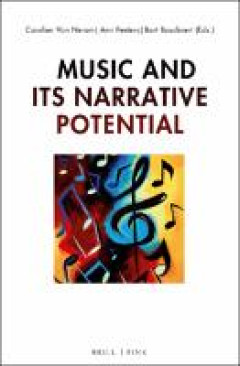
E-book Music and its Narrative Potential
“Music and its Narrative Potential” is a book about musical stories. It is a collection of thoughts on how music evokes narratives through its own medium-specific strategies. This book is a versatile consideration of narratives expressed through music. There are several threads that flow and recur through its different chapters, namely contemporary music, interdisciplinary approaches, conte…
- Edisi
- -
- ISBN/ISSN
- 9783846767726
- Deskripsi Fisik
- 335 halaman
- Judul Seri
- -
- No. Panggil
- 780.72 BOU m
E-book The Chamber Musician in the Twenty-First Century
In recent research, there has been growing emphasis on the collaborative, social, and collective nature of musical behaviour and practices. Among the emerging hypotheses in this connection are the idea that listening to music is always listening together and being with the other; that music making is a matter of intercorporeality, mutuality, and emphatic attunement; and that creative agency in …
- Edisi
- -
- ISBN/ISSN
- 9783038975632
- Deskripsi Fisik
- 334 hlm
- Judul Seri
- -
- No. Panggil
- 785 CAM t
E-book The Performance Practice of Electroacoustic Music : The Studio di Fono…
fter more than 60 years, the term performance practice in the context of elec-troacoustic music seems to be established in professional circles.1 However, the notion of the interpretation of electroacoustic music, at least of its purely electronic, non-instrumental parts, is not self-evident for experienced audiences and even for professional musicians who are not familia…
- Edisi
- -
- ISBN/ISSN
- 9783034331197
- Deskripsi Fisik
- 158 hlm
- Judul Seri
- -
- No. Panggil
- 781.5 BEN t
E-book Musician Vol. 1
Music notation is a symbolic language that is designed to illustrate the melodic, harmonic, and rhythmic elements of music. Pitch refers to the relative highness or lowness of a performed sound. In western tonal music, these pitches have designated note names C, D, E, F, G, A and B that occur in ascending and descending fashion. In music notation, note symbols are used to describe the particula…
- Edisi
- -
- ISBN/ISSN
- -
- Deskripsi Fisik
- 461 hlm
- Judul Seri
- -
- No. Panggil
- 781.2 NTC m
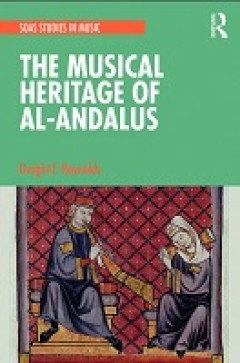
E-book The Musical Heritage of Al-Andalus
The Musical Heritage of Al-Andalus is a critical account of the history of Andalusian music in Iberia from the Islamic conquest of 711 to the final expulsion of the Moriscos (Spanish Muslims converted to Christianity) in the early 17th century. This volume presents the documentation that has come down to us, accompanied by critical and detailed analyses of the sources written in Arabic, Old Cat…
- Edisi
- -
- ISBN/ISSN
- 9781000289527
- Deskripsi Fisik
- 272 halaman
- Judul Seri
- -
- No. Panggil
- 780.72 REY t
E-book The Classical Music Book: Big Ideas Simply Explained
- Edisi
- -
- ISBN/ISSN
- -
- Deskripsi Fisik
- 354 halaman, ilus.
- Judul Seri
- -
- No. Panggil
- 780.166 COL i
- Edisi
- -
- ISBN/ISSN
- -
- Deskripsi Fisik
- 354 halaman, ilus.
- Judul Seri
- -
- No. Panggil
- 780.166 COL i
E-book The Legacy of Elise Hall : Contemporary Perspectives on Gender and the…
It was in November 2021 that we shared the intriguing idea of co-editing a book project on the historical figure of saxophonist Elise Hall. After sending several messages back and forth, we finally found a mutually agreeable time for a video meeting. Kurt was at his home in Brussels, while Adrianne was in Chicago, a sev-en-hour time difference. We had first met at a conference in 2016, “Prepo…
- Edisi
- -
- ISBN/ISSN
- 9789461665478
- Deskripsi Fisik
- -
- Judul Seri
- -
- No. Panggil
- 780.904 BER t
E-book Hip-hop History : From the Streets to the Mainstream
Hip hop is more than music; it’s a cultural movement that incorporates different elements of art. Four foundational elements characterize hip hop culture. The original four main pillars of hip hop include DJing/turntablism, MCing/rapping, Bboying/breaking, and visual/graffiti art. These forms of expression have also developed into further subcultures with lasting legacies. The intersection of…
- Edisi
- -
- ISBN/ISSN
- -
- Deskripsi Fisik
- 14 hlm
- Judul Seri
- -
- No. Panggil
- 781.649 ROR h
E-book History of Rock & Roll 1950
By the mid-1950s, rock and roll had become wildly popular across the color line. A number of factors contributed: This was in part because white teens secretly tuned in to black radio stations to hear the new sound. Scrambling to fill airtime due to increasing competition from television, white radio networks were more willing to turn to music which was outside of the mainstream, including up-a…
- Edisi
- -
- ISBN/ISSN
- -
- Deskripsi Fisik
- 45 hlm
- Judul Seri
- -
- No. Panggil
- 781.66 SHE h
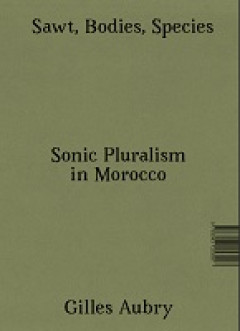
E-Book Sawt, Bodies, Species: Sonic Pluralism in Morocco
How do the Moroccan sound archives of the writer Paul Bowles from the 1970s sound today with the musicians of that time? What does an earthquake in Agadir have to do with a Japanese science fiction film? What sound do stones have? And what do we learn about environmental pollution by listening to the agar agar algae? Drawing on critical sound studies, ethnographic research, and artistic practic…
- Edisi
- -
- ISBN/ISSN
- 9783943253597
- Deskripsi Fisik
- 153 halaman
- Judul Seri
- -
- No. Panggil
- 780.72 AUB s
E-book American Popular Music
Over the past 100 years or so, American popular music has gained acceptance at home and abroad. It has become the music that many, especially the young and young at the heart, listen to virtually all of the time. In the United States, the vast array of popular music forms are aired by more than 90 percent of all radio stations. Internationally, both American versions of popular songs and versio…
- Edisi
- -
- ISBN/ISSN
- 9781580379830
- Deskripsi Fisik
- 99 hlm
- Judul Seri
- -
- No. Panggil
- 781.63 AMM a
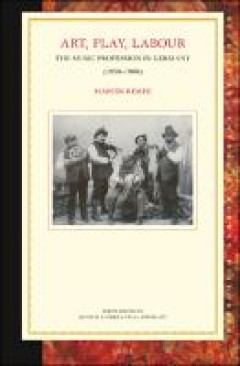
E-Book Art, Play, Labour: the Music Profession in Germany (1850–1960)
Germany is considered a lauded land of music: outstanding composers, celebrated performers and famous orchestras exert great international appeal. Since the 19th century, the foundation of this reputation has been the broad mass of musicians who sat in orchestra pits, played in ensembles for dances or provided the musical background in silent movie theatres. Martin Rempe traces their lives and …
- Edisi
- -
- ISBN/ISSN
- 9789004542723
- Deskripsi Fisik
- 486 halaman
- Judul Seri
- -
- No. Panggil
- 780.9 REM a
E-book Merry Christmas Songbook
Christmas is a special time. A Time of rejoicing, of solemn thanksgiving, of gift-giving, of pleasures both modern and traditional, of feasting and of being together with family and friends. And christmas is a time of special music. What better way to celebrate the birthday of Jesus than to join together and raise our voices in the special songs of Christmas - or to tune our musical songs of Ch…
- Edisi
- -
- ISBN/ISSN
- 0895771055
- Deskripsi Fisik
- 254 hlm
- Judul Seri
- -
- No. Panggil
- 781.71 SIM m

E-Book George Rochberg, American Composer: Personal Trauma and Artistic Creat…
- Edisi
- -
- ISBN/ISSN
- 9781787444461
- Deskripsi Fisik
- 254 halaman
- Judul Seri
- -
- No. Panggil
- 780.72 WLO g
- Edisi
- -
- ISBN/ISSN
- 9781787444461
- Deskripsi Fisik
- 254 halaman
- Judul Seri
- -
- No. Panggil
- 780.72 WLO g

E-Book Richard Wagner's Essays on Conducting: A New Translation with Critical…
The first modern English edition of Richard Wagner's essays on conducting, extensively annotated, with a critical essay on Wagner as conductor: his aesthetic, practices, vocabulary, and impact. Richard Wagner was one of the leading conductors of his time. Through his disciples Hans von Bülow, Hans Richter, Anton Seidl, Felix Mottl, Arthur Nikisch, and their many notable protégés, a Wagnerian…
- Edisi
- -
- ISBN/ISSN
- 9781800101890
- Deskripsi Fisik
- 324 halaman
- Judul Seri
- -
- No. Panggil
- 780.72 WAL r
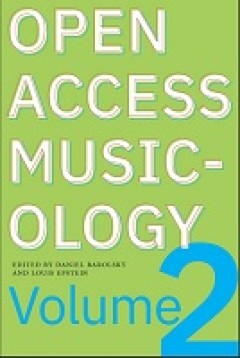
E-Book Open Access Musicology: Volume 2
Open Access Musicology (OAM) publishes peer-reviewed, scholarly essays primarily intended to serve students and teachers of music history, ethno/musicology, and music studies. The constantly evolving collection ensures that recent research and scholarship inspires classroom practice. OAM essays provide diverse and methodologically transparent models for student research, and they introduce diff…
- Edisi
- -
- ISBN/ISSN
- 9781643150499
- Deskripsi Fisik
- 202 halaman
- Judul Seri
- -
- No. Panggil
- 780.1 EPS o

E-book Immaculate Sounds
In Catholic doctrine, the Immaculate Conception of the Virgin Mary is the belief that Mary, the mother of Christ, was exempt from original sin from the moment of her conception, and thereby a co-redeemer alongside her son. Praise for this complicated devotion took place in Europe throughout the medieval period and resounded in the Americas with the founding of the first convent in Mexico City u…
- Edisi
- -
- ISBN/ISSN
- 9780197621899
- Deskripsi Fisik
- 361 halaman
- Judul Seri
- -
- No. Panggil
- 780.1 FAV i
E-book Railways & Music
When the Stockton & Darlington Railway opened in 1825, it was the first steam-powered railway to carry passengers. Since then there has been no shortage of music connected with trains and railways: orchestral pieces and popular songs describing railway journeys; those that celebrate the opening of a new line; work songs and blues describing the hardship of building the railroads, even the first…
- Edisi
- -
- ISBN/ISSN
- 9781862182035
- Deskripsi Fisik
- -
- Judul Seri
- -
- No. Panggil
- 781.68 WIN r
E-book Gear Acquisition Syndrome : Consumption of Instruments and Technology …
Although not di-rectly related to GAS, it is worth mentioning that the German music instrument re-tailer Thomann (2019) hosts an annual summer camp as part of its ‘Gearhead Uni-versity’. YouTubers get the opportunity to review each piece of equipment in Thomann’s warehouse in a small village in southern Germany, document their ex-periences on video and share them online with fe…
- Edisi
- -
- ISBN/ISSN
- -
- Deskripsi Fisik
- 285 hlm
- Judul Seri
- -
- No. Panggil
- 780.2 HER g
E-book Virtual Works – Actual Things : Essays in Music Ontology
he International Orpheus Academy for Music and Theory is the annual conference organised by the Orpheus Research Centre. For the Academy, a selected guest faculty with outstanding expertise in a specific topic is invited to attend a series of lectures and to write an individual essay. All researchers from the Orpheus Research Centre, as well as th…
- Edisi
- -
- ISBN/ISSN
- 9789461662521
- Deskripsi Fisik
- 194 hlm
- Judul Seri
- -
- No. Panggil
- 780.1 GOE v
E-book Foundations of Music Theory : Fundamental Concepts in The Language of …
In it’s broadest possible sense, music is defined as “organized sound.” This openended and safe definition is coherent regardless of era, style, culture, or the mechanics of musical organization. Each successive historical era produces musically artistic expressions of its own time, its own musical aura. The study of Music Theory is the means by which we investigate this. Among the commu…
- Edisi
- 1st ed.
- ISBN/ISSN
- 9781517808952
- Deskripsi Fisik
- 222 hlm
- Judul Seri
- -
- No. Panggil
- 780.1 COO f
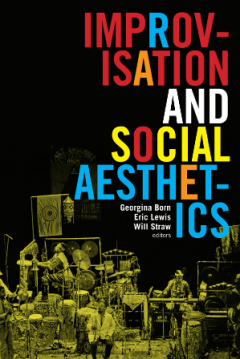
E-book Improvisation and Social Aesthetics
Addressing a wide range of improvised art and music forms—from jazz and cinema to dance and literature—this volume's contributors locate improvisation as a key site of mediation between the social and the aesthetic. As a catalyst for social experiment and political practice, improvisation aids in the creation, contestation, and codification of social realities and identities. Among other to…
- Edisi
- -
- ISBN/ISSN
- 9780822374015
- Deskripsi Fisik
- -
- Judul Seri
- -
- No. Panggil
- 781.36 BOR i

E-book Music – Media – History : Re-Thinking Musicology in an Age of Digi…
- Edisi
- -
- ISBN/ISSN
- 9783839451458
- Deskripsi Fisik
- 300 hlm
- Judul Seri
- -
- No. Panggil
- 780.7 SAN m
- Edisi
- -
- ISBN/ISSN
- 9783839451458
- Deskripsi Fisik
- 300 hlm
- Judul Seri
- -
- No. Panggil
- 780.7 SAN m
E-book Karawitan : Source Readings in Javanese Gamelan and Vocal Music
Look at the picture for a while, if you will, even if you cannot read theJavanese writing on it. It is a picture on a calendar for the months of Novemberand December 1978. I remember Judith and I were talking then about the like-ness between the structure of Javanese music, the way plots of shadow plays areput together, and the way cale…
- Edisi
- Vol. 2
- ISBN/ISSN
- 089148034X
- Deskripsi Fisik
- 423 hlm
- Judul Seri
- -
- No. Panggil
- 781.7 BEK k
E-book The Anthropology of Music
Ethnomusicology today is an area of study caught up in a fascination with itself. Although its roots can be traced back some eighty years, and its origin perhaps even earlier, it is only within the past ten or fifteen years that, under the impetus of younger scholars who had brought to it new concepts of theory, method, and application, it has taken a sudden forward surge. The result has been a…
- Edisi
- -
- ISBN/ISSN
- 0810106078
- Deskripsi Fisik
- 371 hlm
- Judul Seri
- -
- No. Panggil
- 780.1 MER t
E-book The Power of Music : An Exploration of the Evidence
The speed of change in electronic media in the latter part of the 20thcentury revolutionised access to and the use of music in people’s lives. Music can be accessed in many ways, through radio, CDs, DVDs, TV, tablets, SMART technologies, computers and phones, and can be downloaded to enable the creation of personal playlists. This can be achieved …
- Edisi
- -
- ISBN/ISSN
- 9781800644182
- Deskripsi Fisik
- 849 hlm
- Judul Seri
- -
- No. Panggil
- 780.1 HAL t

THE COMPLETE KEYBOARD PLAYER ABBA
- Edisi
- cet. 1
- ISBN/ISSN
- 979-22-2282-0
- Deskripsi Fisik
- 40hlm; ilus;23 x 32 cm
- Judul Seri
- -
- No. Panggil
- 785 BAK t
- Edisi
- cet. 1
- ISBN/ISSN
- 979-22-2282-0
- Deskripsi Fisik
- 40hlm; ilus;23 x 32 cm
- Judul Seri
- -
- No. Panggil
- 785 BAK t
 Karya Umum
Karya Umum  Filsafat
Filsafat  Agama
Agama  Ilmu-ilmu Sosial
Ilmu-ilmu Sosial  Bahasa
Bahasa  Ilmu-ilmu Murni
Ilmu-ilmu Murni  Ilmu-ilmu Terapan
Ilmu-ilmu Terapan  Kesenian, Hiburan, dan Olahraga
Kesenian, Hiburan, dan Olahraga  Kesusastraan
Kesusastraan  Geografi dan Sejarah
Geografi dan Sejarah